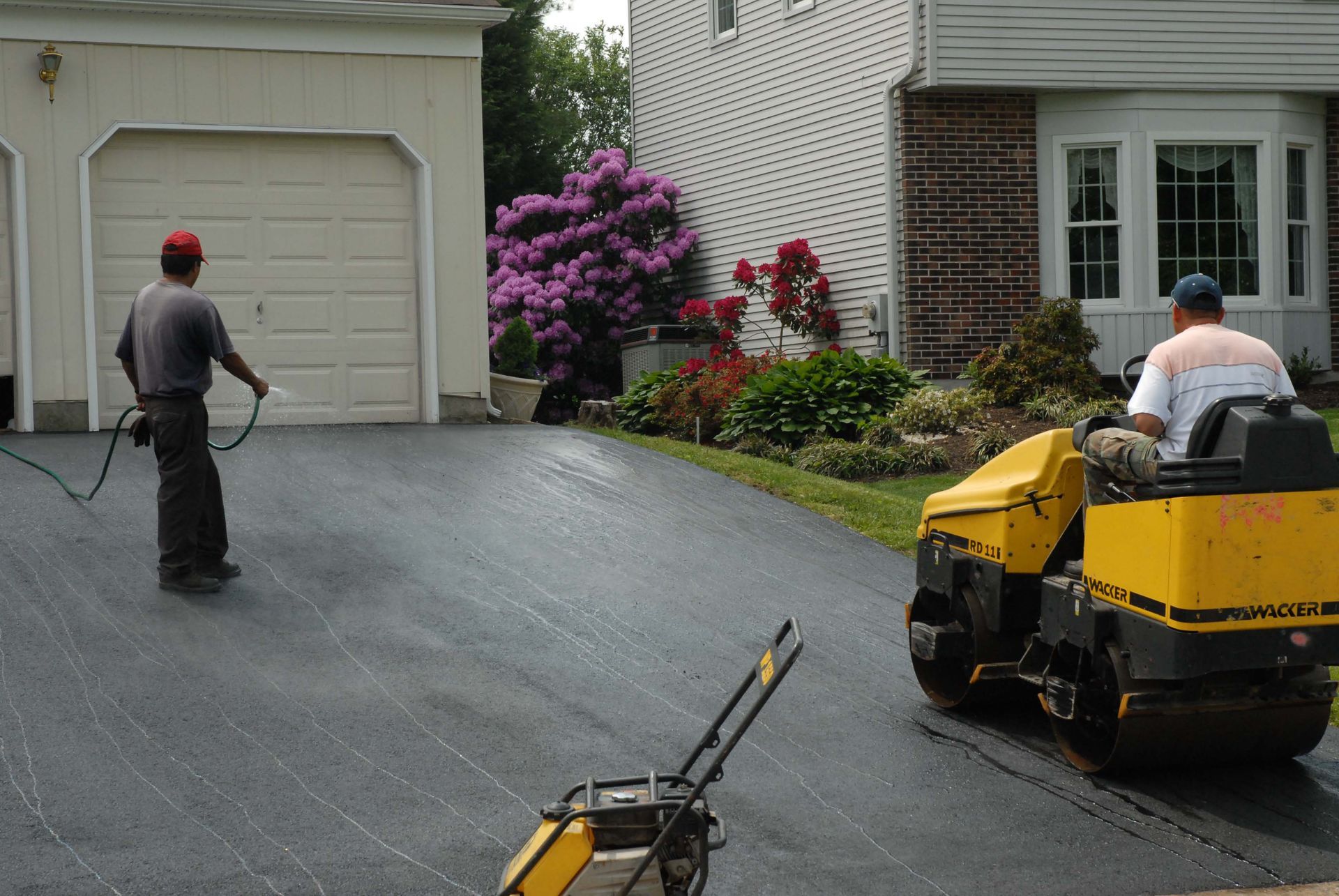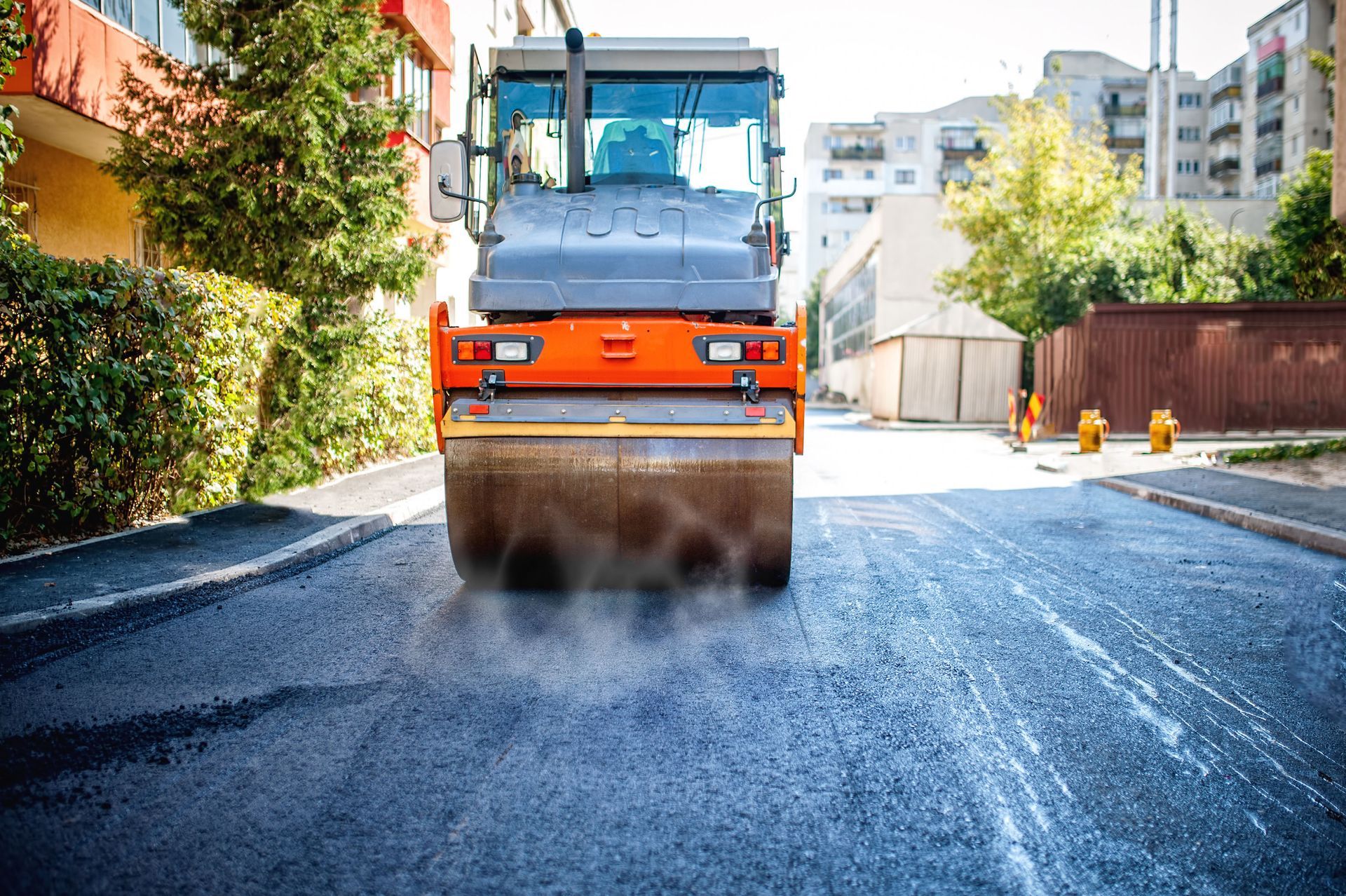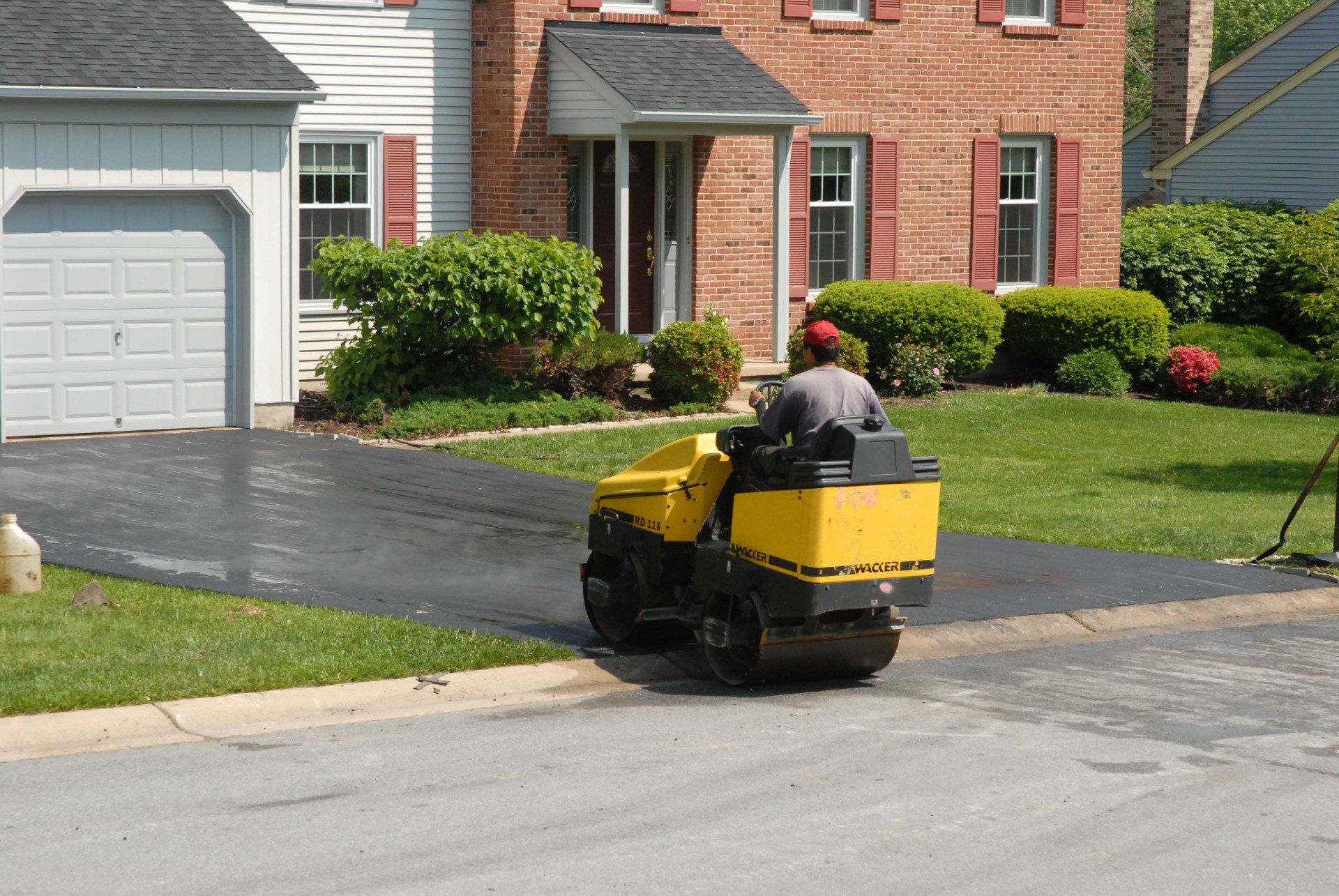6 Signs Your Parking Lot Needs Repairs
In any commercial or residential property, the parking lot serves as the first point of contact for visitors and customers. A well-maintained parking lot not only enhances curb appeal but also ensures safety and accessibility. Over time, various factors can lead to this essential space's deterioration, signaling the need for repairs. From small cracks to large potholes, these imperfections can escalate, resulting in safety hazards and increased repair costs. This article outlines six critical signs indicating that your parking lot requires attention. Many of these issues are best handled by experienced asphalt contractors, who understand how to repair and protect surfaces for long-term durability.
1. Presence of Potholes
Frequent Trip Hazards
Potholes are not merely minor annoyances; they are significant safety hazards. For pedestrians, they represent potential trip and fall risks, especially during unfavorable weather conditions. As the opening widens and deepens, unsuspecting individuals might misstep, leading to severe injuries. The regular occurrence of such accidents could translate into heightened liability concerns for property owners. Hence, addressing pothole formation promptly is crucial for ensuring the safety of all users.
Vehicle Damage Potential
Vehicles passing over potholes are at risk of accumulating costly damage. From misaligned tires and damaged suspension to more severe undercarriage harm, ignoring potholes can be expensive. Consistently driving over these imperfections exacerbates the wear and tear on vehicles. Consequently, vehicular complaints can increase, affecting the overall perception of the property's maintenance standards. Proactively repairing these holes helps mitigate potential vehicular damage and subsequent costs. Many property owners turn to asphalt contractors to handle these repairs quickly and efficiently.
Water Accumulation Risks
Potholes can become reservoirs for water during rainfall, leading to water accumulation. Standing water compromises the asphalt's integrity, accelerating its deterioration. This phenomenon, if left unchecked, can exacerbate damage, deepening and widening the potholes further. Effective drainage and regular pothole repairs can significantly reduce the risk of accelerated surface wear. By addressing these concerns early, property managers can prolong the lifespan of the parking lot infrastructure.
2. Cracks and Fissures
Types of Cracks
Parking lot cracks come in various forms, each indicating different underlying issues. Linear cracks, which run parallel or perpendicular, usually result from the natural aging of asphalt. Meanwhile, block cracks form distinct shapes that suggest poor drainage or old age. While appearing minor initially, these cracks gradually expand, compromising the overall parking lot structure. Identifying these early signs ensures timely intervention and cost-effective solutions.
Causes of Cracking
There are numerous causes for cracks in parking lots, encompassing environmental and construction-related factors. Temperature fluctuations cause the asphalt to expand and contract, leading to inevitable cracks over time. Additionally, heavy foot and vehicle traffic exacerbate surface stress, while inadequate initial construction can accelerate cracking. By understanding these causes, property owners can take informed preventive measures. Regular sealcoating, for instance, protects the surface from environmental stressors.
Impact on Parking Lot Functionality
Cracks, if unaddressed, can severely affect a parking lot's functionality and safety. Water can seep through these openings, weakening the foundational layers beneath the surface. This leads to more severe deterioration issues such as potholes or alligator cracking. As the cracks spread and multiply, the overall structural integrity of the parking lot wanes. Thus, addressing these early indicators is vital to maintaining a functional and safe parking area. Asphalt contractors can apply sealants and other treatments to control and repair cracks before they spread.
3. Fading Pavement Markings
Safety Implications
Pavement markings play an integral role in guiding traffic and ensuring pedestrian safety. Over time, exposure to the elements can lead these markings to fade, reducing visibility. Faded lines and symbols result in confusion, increasing the risk of accidents. Clearly defined markings guide vehicles and pedestrians, allowing for safe and efficient traffic flow. Maintaining these markings is non-negotiable for property owners aiming to ensure user safety.
Effect on Traffic Flow
Effective traffic flow is central to the utility of any parking lot. Faded pavement markings disrupt orderly movement, causing congestion and potential vehicle collisions. This inefficiency can frustrate users, deter visitors, and harm a property's reputation. Regularly refreshing pavement markings helps regulate traffic smoothly and prevent vehicular chaos. By ensuring clear and visible markings, property managers can enhance user experience in the parking lot.
Legal Compliance with Regulations
Many areas have strict regulations regarding the maintenance of pavement markings within parking lots. Compliance with these regulations is crucial to avoid potential fines and legal issues. In particular, accessible parking spaces and directional arrows must remain prominent and visible. By prioritizing the upkeep of these markings, property owners align with legal standards and gauge the safety of their premises. Regular check-ups and repaints prevent compliance-related complications.
4. Standing Water and Drainage Issues
Causes of Poor Drainage
Poor drainage can result from various factors, including improper initial construction and natural wear over time. Clogged drains, uneven surfaces, and subsurface erosion can lead to water pooling. When left unattended, this standing water compromises the structural integrity of the parking lot surface. Addressing drainage issues necessitates inspecting the underlying causes and implementing effective solutions. Adequate drainage systems play a vital role in maintaining surface longevity.
Impact on Longevity of Pavement
Standing water accelerates the deterioration of asphalt surfaces, impairing pavement longevity. Constant exposure to water weakens the asphalt binder, causing cracks and potholes. As asphalt breakdown progresses, overall maintenance costs increase substantially. Ensuring a well-maintained drainage system is essential to preserving the surface's integrity and reducing repair expenses. Regular inspections and timely interventions extend the pavement's lifespan.
Health and Safety Risks
Water stagnation in parking lots poses significant health and safety threats. Standing water can become a breeding ground for mosquitoes, potentially spreading diseases. Furthermore, pooled water can cause vehicles to skid and lead to pedestrian slips. Addressing drainage issues not only maintains the infrastructure but also prioritizes user safety. Proactive drainage solutions minimize these risks and safeguard property occupants and visitors. Many property managers rely on asphalt contractors to resolve these drainage challenges effectively.
5. Alligator Cracking
Identifying Alligator Cracking
Alligator cracking, named due to its resemblance to an alligator's skin, signifies underlying structural issues. Unlike surface-level cracks, these indicate a compromised subsurface often caused by poor drainage or overloading. Early identification allows property managers to assess and address foundational issues proactively. A comprehensive inspection helps determine the severity and formulate a responsive plan of action. Ignoring these cracks leads to escalating maintenance challenges and costs.
Common Causes and Triggers
Common causes of alligator cracking include insufficient foundational support and persistent water damage. Heavy vehicles and improper pavement thickness exacerbate these issues, accelerating deterioration. Addressing the root of these problems is crucial to mitigating further structural damage. Regular maintenance and proper construction techniques can minimize the risk of alligator cracking. Understanding these triggers helps property managers make informed maintenance decisions.
Differences from Other Cracks
Alligator cracking distinguishes itself from other crack types through its interconnected pattern and severity. While linear or block cracks often involve surface issues, alligator cracking signals subsurface damage. This deeper damage necessitates comprehensive repairs, often requiring resurface or replacement efforts. Properly addressing these cracks demands a deeper understanding of underlying causes and effective remediation. Regular inspections pinpoint these critical concerns, facilitating timely intervention.
6. Surface Wear and Tear
Signs of Surface Abstraction
Surface wear and tear are inevitable, with signs such as discoloration, smoothing, and polished stone surfaces. Regular user traffic combined with environmental factors gradually erodes surface materials. This wear compromises traction, affecting vehicle and pedestrian safety. Timely interventions such as resurfacing or sealcoating mitigate these effects, restoring surface integrity. Recognizing the visible signs of wear is essential for planning effective maintenance strategies.
Impact of Weather on Surface Integrity
Weather conditions significantly influence the rate of surface wear and tear. Seasonal changes, such as freezing and thawing cycles, contribute to surface degradation. Additionally, UV exposure fades and weakens the asphalt binder, making it more susceptible to cracking. Mitigating these effects involves protective measures like sealcoating, which extends surface longevity. According to Mordor Intelligence, the asphalt seal coat market was valued at $1.47 billion in 2024, underscoring its significance in maintenance strategies.
Innovative Repair Technologies
Advancements in pavement repair technologies offer innovative solutions to combat surface wear and tear. With options like polymer-modified bitumen and infrared repair, the industry continually evolves for better performance. These technologies prioritize longevity, safety, and cost-efficiency in maintaining parking lot surfaces. By adopting these innovations, property managers can enhance and preserve their infrastructure. Staying informed about such technologies ensures effective and sustainable maintenance approaches. Asphalt contractors frequently adopt these innovations to deliver longer-lasting results for clients.
A well-maintained parking lot is crucial for the safety, appearance, and functionality of any property. By understanding and identifying the signs indicating necessary repairs, property owners and managers can take proactive steps to address issues before they escalate. Regular inspections and timely repairs not only extend the life of the parking lot but also preserve its usability and minimize liability risks. Incorporating modern repair techniques further extends the longevity and performance of these vital surfaces. Experienced asphalt contractors provide the expertise needed to handle everything from cracks and potholes to advanced resurfacing. Ultimately, a proactive approach to maintenance ensures the parking lot remains a valuable asset to any property. Contact Mid-River Asphalt Inc today to schedule your professional evaluation and keep your parking lot in top condition.





Share On: